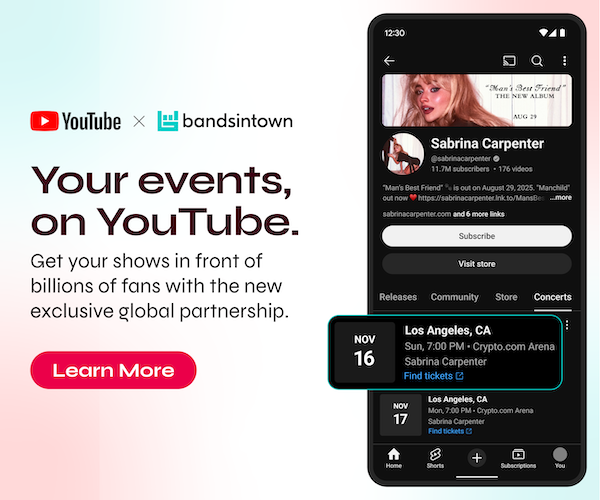Columnist Eamonn Forde (pictured inset) is a long-time music industry journalist, and the author of The Final Days of EMI: Selling the Pig.
His new book, Leaving The Building: The Lucrative Afterlife of Music Estates, is out now via Omnibus Press.

August and September 2021 were also reasonably good months to stand as a marker for just how far the boxsetification of such landmark albums has travelled.
In 2011, Primal Scream put out the 20th anniversary edition of Screamadelica (setting you back £99) that was spread across four CDs, one DVD and two “vinyls”. That was, however, to prove a mere amuse-bouche for an even bigger boxset for its 30th anniversary edition, with more music spread across even more “vinyls” as a series of 12-inch singles as well as a sister release of demos on multiple formats that together will cost you £160.
Metallica, meanwhile, threw everything at the 30th anniversary incarnation of their classic album (costing you $239.98 from their official store) that was stretched across three LPs, 14 CDs and six DVDs, as well as all manner of gewgaws like tour laminates, guitar picks and a lyrics folder.
Maybe due to the fact that vinyl pressing plants are buckling under incredible demand, the 30th anniversary edition of Nirvana’s Nevermind is currently only available for pre-order and comes in a multitude of expanded formats, the most expensive of which goes for £172.99. It obviously had to eclipse what was rounded up for the 20th anniversary edition in terms of both scope and price.
These are all big ticket boxsets aimed at a maturing fan demographic who might not get an attack of the vapours if asked to pay what would normally be a decent chunk of their monthly mortgage repayments for a nostalgic scamper around an album they have lived with since their school or college days.
But they are as nothing when you step back to what the generations before are invited to pay for deluxe editions of the albums that shaped their youth.
For the solidly Gen X-er hankering after the days of buying impractical leather trousers on Sunset Strip and drinking JD and Coke at the Rainbow Bar & Grill, the Locked N’ Loaded version of Guns N’ Roses’ Appetite For Destruction in 2018 was retailing for $1,000.
It came in a wooden box stuffed with multiple discs and all manner of other gimcracks like “five custom hand-sculpted metal-cast band skull face rings”, “a replica of the band’s first stage banner from the ’85/’86 club days”, “two temporary tattoo sheets featuring life-size tattoos of the band members’ tats” and “a bandana” (singular).
Or there was the preposterous boxset version of U2’s Achtung Baby in 2011 that seemed to straddle two timezones and which came, incredibly, with a pair of replica Bono shades. Rumours that it came with a replica tax-deferment plan for the buyer were unfounded.
Even avowedly indie acts of the same generation joined this steeplechase, with the Pixies releasing a boxset that came with a “faux fur hardcover 96-page art book” (that seemed to have a phallus spray-painted on it) for $495.
For sheer audacity, you have to hand it to No Doubt who released a $175 version of their Push And Shove album that included a mini speaker stack.
You can watch the unboxing video here. It’s ridiculous. And therefore incredible.
But for Boomers, the notion of “too much” does not seem to apply. Pink Floyd albums Dark Side Of The Moon, The Wall and Wish You Were Here all got the “immersion” treatment around a decade ago, where the music was padded out with scarves and bags of marbles.
Neil Young, meanwhile, appears to be on an unrelenting mission to create boxsets (with Archives Vol 1 and Vol 2) of such heft that they would require the purchaser to reinforce their floors and raise their ceilings.
It was, as it is with many things, Bob Dylan who started this content snowball rolling when the Bootleg Series he initiated back in 1991 suddenly moved up several gears as each release appeared to become wider in girth than the one preceding it. The Basement Tapes Complete in 2014 ran to six discs while The Cutting Edge 1965–1966 the following year was available in an 18-disc version that included “every single note recorded by Bob Dylan in the studio” in those two years. To sit as a companion piece, he also released a 36-disc set of all known recordings of his electric tour in 1966.
“It all amounts to a content arms race that is steadily spooling backwards through the generations.”
This year also saw the uber deluxe edition (not just any old deluxe edition, you understand) of George Harrison’s All Things Must Pass selling for £859.99. That did, however, include not just acres of music but also a “wooden bookmark made from a felled Oak tree (Quercus Robur) in George’s Friar Park”, “Rudraksha beads contained in individual custom-made boxes” and “1/6 scale replica figurines of Harrison and the gnomes featured on the iconic album cover”. George might have been The Quiet One, but the screams of “HOW MUCH?” on the release of this must have been louder than the crowds at Shea Stadium.
It is, however, classical fans that are deemed the most affluent and presumed to have the most space in their homes. Back in 2016, the Mozart 225: The New Complete Edition boxset was released and it ran to 200 (that’s two hundred, not a typo) CDs. People who bought it at the time are probably only about half way through it now.
It all amounts to a content arms race that is steadily spooling backwards through the generations.
This is all moving in lockstep with the growing affluence of the target demographics as they get older.
In the 1950s and 1960s, singles were priced at a level that was deemed affordable for someone with only pocket money, a student grant or a Saturday job.
Products today are merely being developed for fans at the upper end of what they deem “affordable”. It’s a kind of multi-formatting based on expanding disposable income.
As acts age out and their endurance for long tours starts to dip, they have two real options open to them: if they are big names, they can cash out by selling their music rights (or a big share in them) at a boom time where multiples of 25+ are being offered for them; or, if their appeal has become somewhat more “selective”, they can look to create the most lavish and overpowering boxset imaginable that can sell in decent numbers and for staggering sums, delivering earnings that arguably put their streaming income in the shade.
“It is all a volume game where disc upon disc of outtakes and demos is stacked upon a teetering tower of baubles and trinkets to justify the retail price.”
To be mercenary about it, if you are a pop star in the autumn of your years and get dry mouthed looking at your latest Spotify and Apple Music statements, why wouldn’t you want to squeeze the last drops out of the premium boxset market before your customer base turn up their collective toes?
One does wonder where it will all end. Maybe Nadine Shah could make a wry and postmodern comment on this all by putting out an expanded version of her latest album that comes in an actual kitchen sink.
Or Dylan could continue to blaze a trail and – in a knowing nod to his fan-slash-nemesis AJ Weberman – release the next edition of the Bootleg Series in a trash can that contains his actual kitchen waste.
It is all a volume game where disc upon disc of outtakes and demos is stacked upon a teetering tower of baubles and trinkets to justify the retail price. But every movement in music births a counter-movement and this “more is more” retail strategy might just give way to an antithetical “less is more” trend.
Perhaps rather than ballooning albums further still when they are reissued, acts will take already bloated albums and, with a steady hand and the wisdom of hindsight, slice them back to the bare essentials.
Fast-forward to 2027 and Oasis compile the 30th anniversary release of Be Here Now and put it out on cassingle.
Music Business Worldwide



